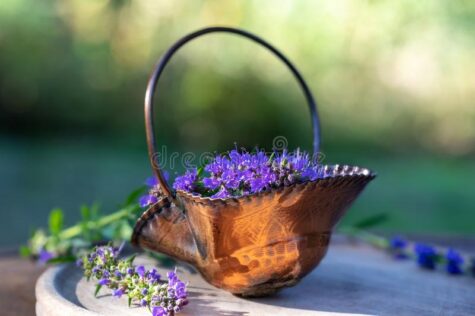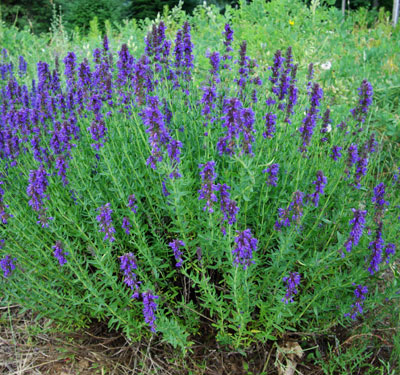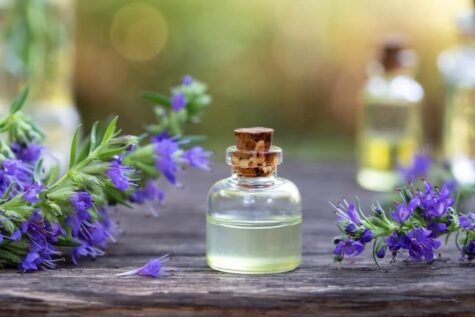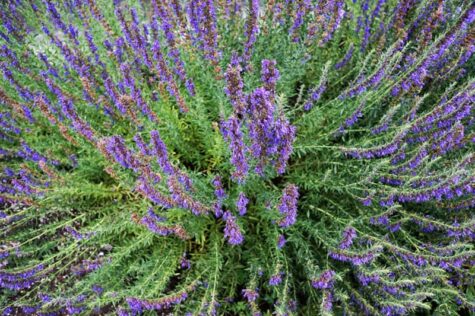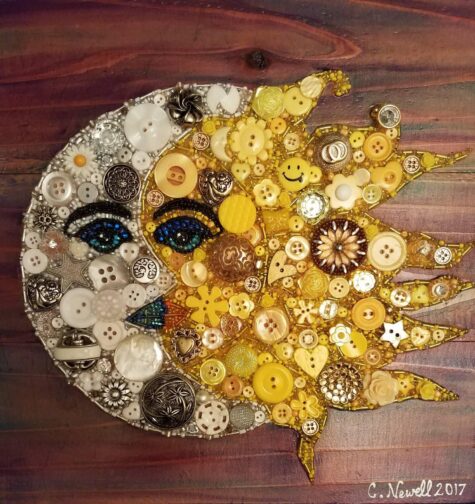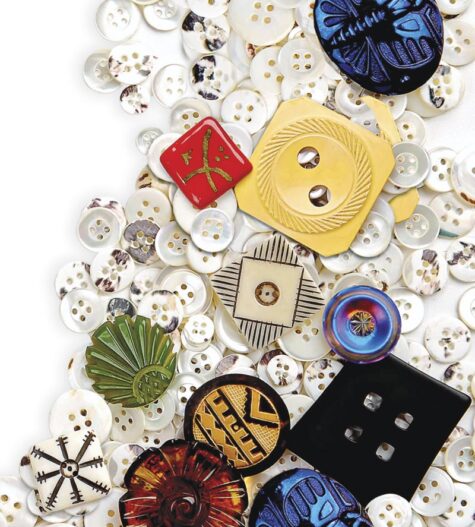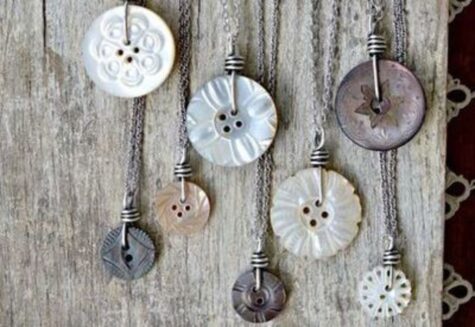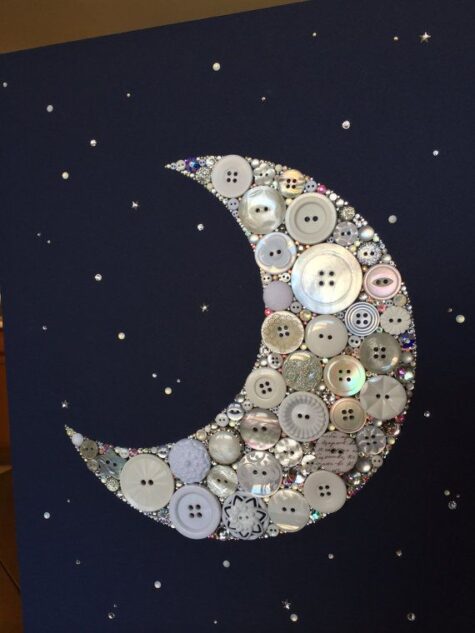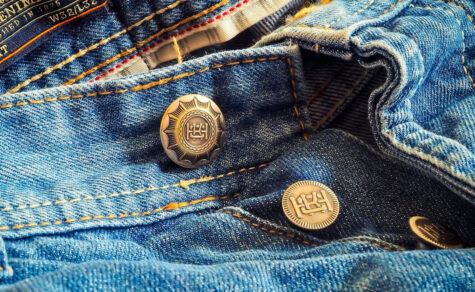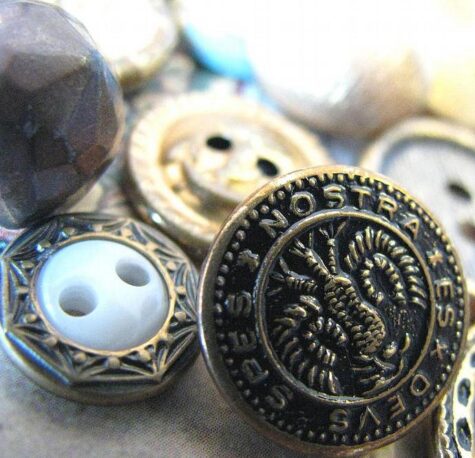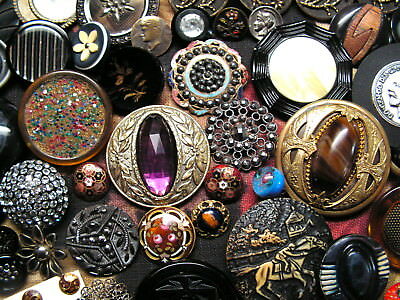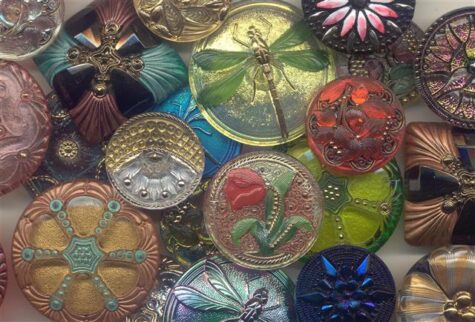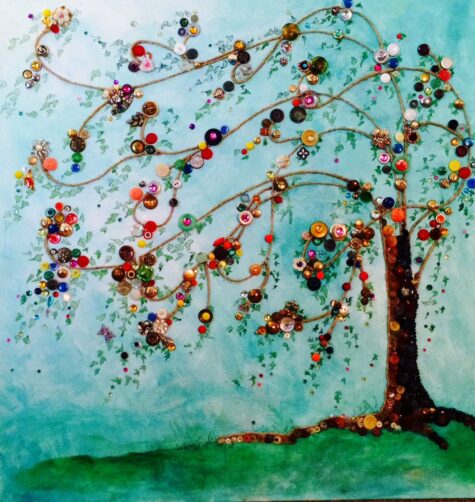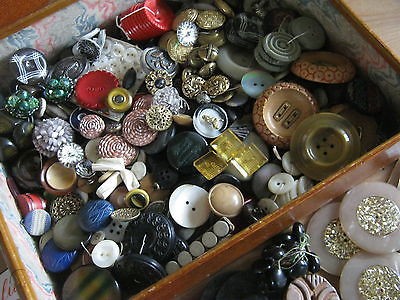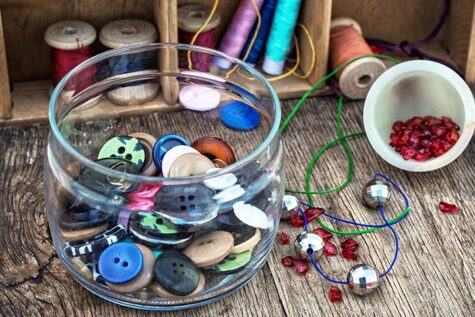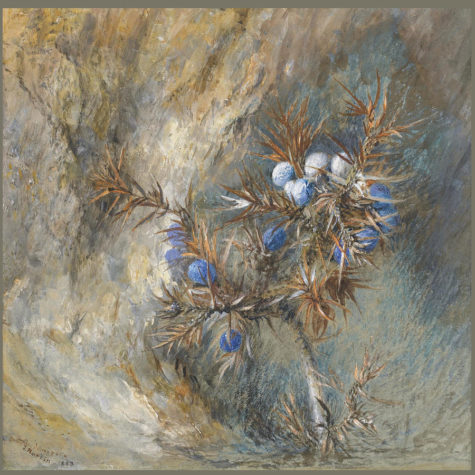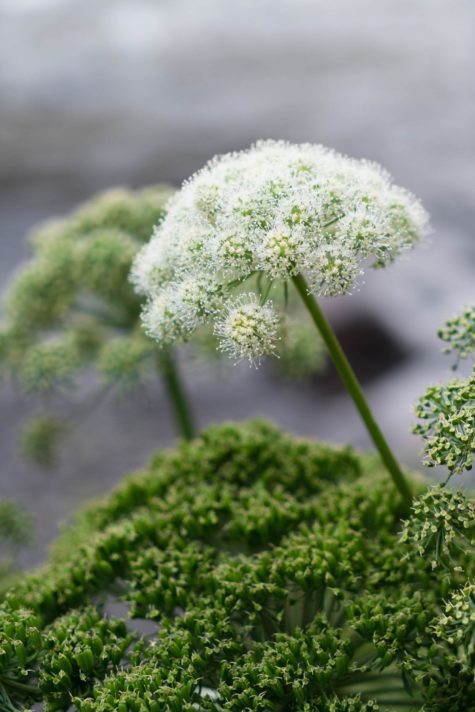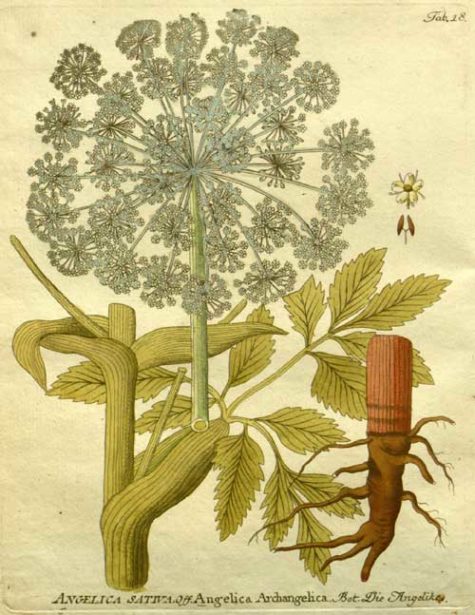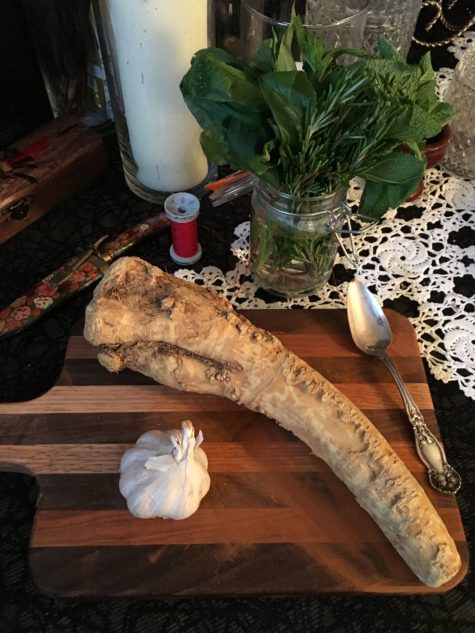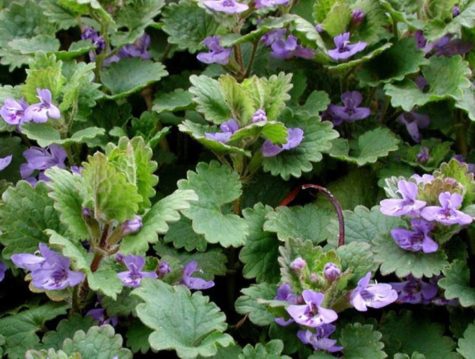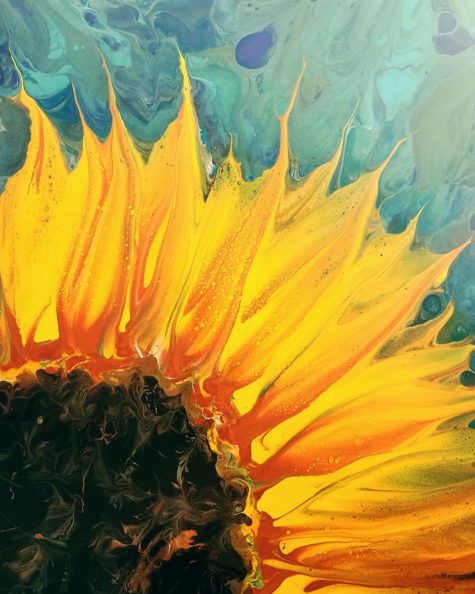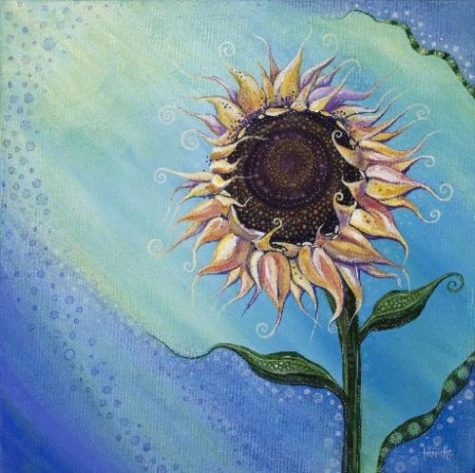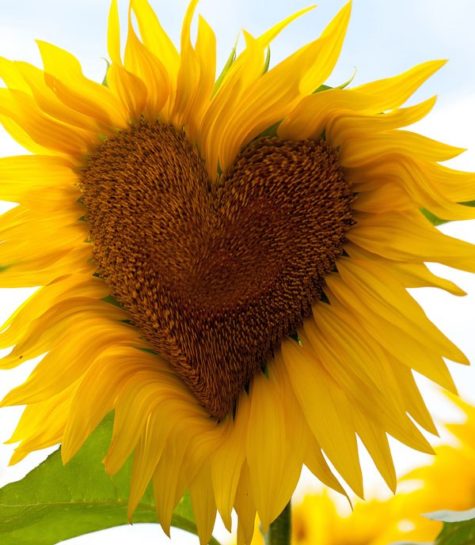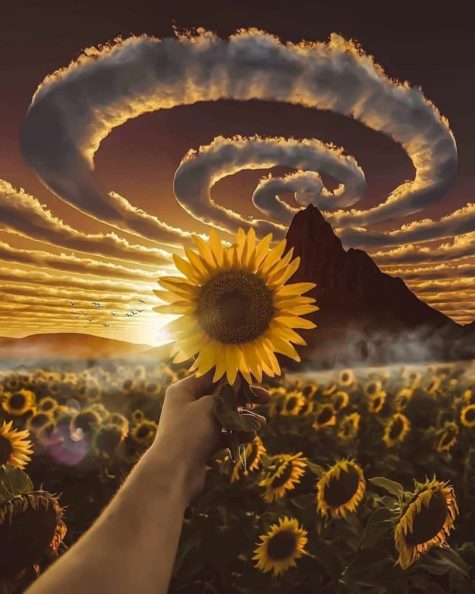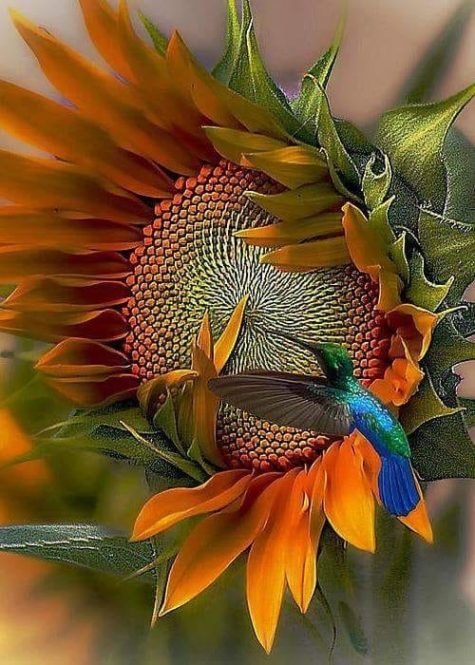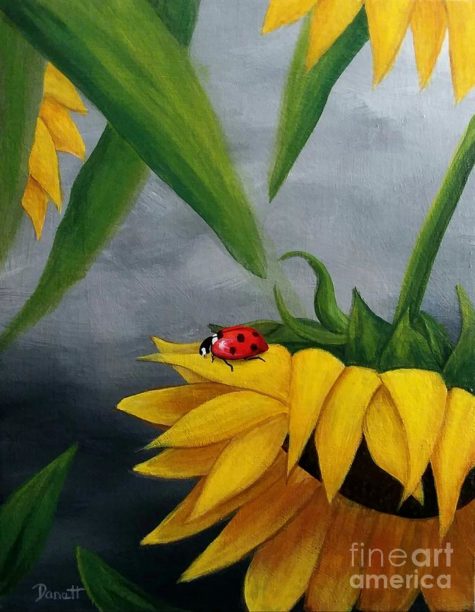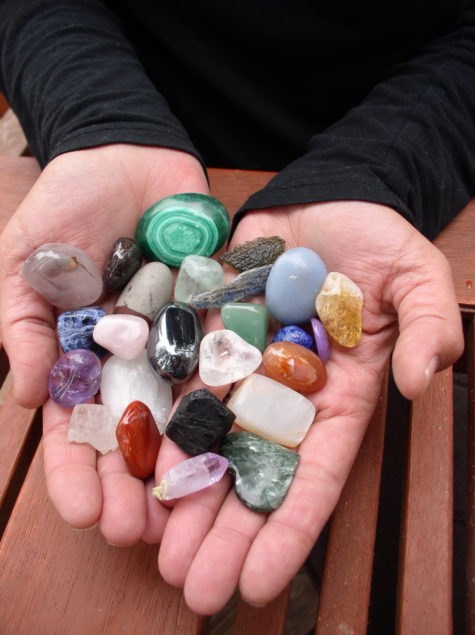Protection
- Ruler: Jupiter
- Element: Fire
- Type: Plant
- Magickal Form: Dried leaves, Essential oil
- Magickal Influences: Purification, Conscious mind
Hyssop, (Hyssopus officinalis) is the herb that purifies your life. This magickal herb will protect you and your home, purify your altar or sacred space, and dispel depression. In the language of flowers, hyssop flower meaning is traditionally symbolic of humility, repentance, health, and sacrifice.
Hyssop has long been used in ritual. Temples in ancient Greece were swept with bunches of this herb. Hyssop was deemed to be sacred to the Goddesses and the Gods.
The Bible calls Hyssop the herb of forgiveness. It is mentioned in Psalm 51, “Purge me with Hyssop; wash me and I shall be whiter than snow.” It was used over six thousand years ago in guilt offerings.
Add a pinch of dried Hyssop to your bathwater as part of a ritual of healing and purification, especially if you have been feeling depressed. This will also help to alleviate feelings of guilt.
Hyssop is a serious karmic herb and can be used to heal the world of negativity. Sprinkle upon the earth for world peace. To remove negativity in your home, tie a bunch of hyssop branches together to create a symbolic broom. Then use it to sweep your home, removing any negative energy or spirits.
You can also use a small bunch of Hyssop leaves to sprinkle water over objects or around rooms to bless them. Hyssop grown around the home is said to repel thieves.
Hyssop is said to have gone into the making of Solomon’s Sprinkler, and is the best choice of herbs to day to make a sprinkler for holy water. Here’s how to make one:
Gather Hyssop beneath the New Moon in Cancer, and dry it through the Full Moon (although it may take longer than this to be completely dry). The handle may be fashioned of wood, or a binding of leather wrapped around it. As such, it will cleanse your magickal space and make it sacred for ritual.
When the plagues visited Egypt, the Hebrew people made brushes of dried bunches of Hyssop. These were used to paint the portals with blood, which protected their children until the priest Moses would lead them away.
Place bunches of hyssop over doors, windows, and room thresholds to prevent entry of infectious disease. Carry small hyssop bouquets when venturing out during flu season (or a pandemic).
Inhale the sharp, greenly-scented essential oils for purification. Or, sniff sprigs of the fresh herb. Place hyssop in a vase of water and leave in the home to purify it as well. The scent of fresh hyssop will clear your head and strengthen your mental processes.
You can also add about a half a cup of Hyssop tea to your mop water to cleanse your house To make the tea, add two tablespoons of dried Hyssop to two cups of boiling water and allow the mixture to steep for about ten minutes before straining it. You can empower this cleansing by reciting Psalm 51 as you mop. Dispose of the used wash water at a crossroads.
Hyssop in olive oil can be added to the bath to kill jinxes and for relief from sin. To kill a jinx, rub the oil mixture downward while standing between two white candles in the bath, as you cleanse yourself recite the 21st Psalm. Carry the used bath water to a crossroads and throw it toward sunrise, saying: “In the name of the Father, Son, and Holy Ghost.” This can also be used to cleanse yourself after practicing dark magick.
Because of its associations with religion, the scent of fresh hyssop can be sniffed to heighten spirituality prior to religious rituals of all kinds. Since it is also a holy herb, you may drink Hyssop as a tea to deepen your connection to the divine.
When burned as incense, dried Hyssop will raise the spiritual vibrations of your home and release the energy of protection.
Hyssop is associated with dragons and it is said that burning it will assist your interactions with them.
Hyssop does have some affinity with the winter solstice and as such can be used in combination with holly. Small bunches of hyssop and holly can be gathered in the summer, bound up with a suitable colored cord, and hung around the home to guard and protect the abode and all who dwell within it.
Hyssop essential oil is excellent for cleansing auras and for healing by the laying on of hands. It is also good for consecrating magickal tools which are of tin, and is the herb for cleansing amethyst and lapis lazuli.
Warnings:
Hyssop essential oil is a highly potent form of this herb. It is toxic in large doses. In children, very low doses can cause convulsions. It’s possible that this may be the only essential oil capable of producing true epileptic seizures. For safety, substitute the fresh herb.
Hyssop should not be taken by people with epilepsy or any history of seizures. Hyssop should not be used while pregnant (may cause miscarriage) or breastfeeding (just to be safe). Small amounts of hyssop used in seasoning foods are considered safe.
Sources:
- Complete Illustrated Encyclopedia of Magical Plants
- Encyclopedia of Magickal Ingredients
- Hoodoo Herb and Root Magic
Buttons are incredible little tokens much like coins or rocks that can be used for a plethora of fun and useful witchy crafts. They’re small, portable, wearable, transferable, and can be made easily or found for very little money at most thrift stores and craft shops!
Think of their physical function – they keep clothing and linens closed….therefore protecting what is underneath from weather, illness, dirt, etc. So automatically, with buttons think protection and comfort. Also, buttons are tools that sit on a threshold. YES. The threshold between us and the outside world! So they are also useful in spirit work.
Meditate on buttons and you start seeing all sorts of sort of oppositions – the sort of sex and death, Lear, at the end of King Lear where Cordelia is dead he asks somebody to undo her button to help her breathe and at the same time we have buttons as the things you fumble with before the act of generation.
In ancient gypsy traditions buttons represent sense of renewal.
Who knew buttons are magickal little tools? Our ancestors did, of course! Did your grandmother or aunt keep a tin or container of random buttons? Mine did and gifted to me. At the time, I wondered why a tin of buttons was so important. Now I know. If you were blessed with a tin of buttons from your family, keep it and make use of it!
- Ancestral work!
If anyone in your family has sewed they probably have a box/jar/tin of sewing supplies left around with some buttons in it! Use these on ancestral altars to again create that connection.
- Friendship spells!
Buttons are a kind of clasp or connection, therefore using buttons in spells for bonding can symbolize a connection, or clasp, of two or more people!
- A Button Magick Charm Necklace
Back in the day our ancestors collected and saved buttons. If you have a collection of buttons, you can make a magickal button necklace. Or what was once called a wishing necklace. For each button you string onto the necklace, pray over it your intention. Different colors for different intentions, etc. Make it fun and be creative!
- Divination.
Often buttons are used for eyes on dolls and stuffed animals and placing a button in front of you during a divination ritual can help you visualize and therefore open your third eye.
- Elemental Buttons
Buttons of certain materials can be used to harken back to certain elements, like clay or wooden buttons for Earth, or shell buttons for water.
- Altar Decorations
Buttons can be used as altar decorations, and larger buttons can act as tiny plates, display stands, or bases for mini offerings!
- Button Magic With Bags and Bottles
Buttons are great to add to shaker jars. When you shake the jar, they make awesome sounds! For me, part of the allure of a shaker jar is not only the prayer while shaking, but the sensory stimulation. The sounds release energy along with your prayers.
Also, buttons can be added to spell bottles and bags. Again, choose colors and styles matching your intentions. Think of the button’s job in the spell as “buttoning” up the situation.
- Sigils
Draw or paint sigils on the back of buttons with a sharpie and seal with some clear glue/resin. Sew them onto your shirt, bag, or thread them to wear as jewelry!
- A Declaration of Love
Japanese male students often confess their love to a female by giving them the second button from the top of their school uniform. The second button is the one closest to the heart.
Sewing Buttons With Intention
- To attract money – attach the button with the letter Z with a diagonal strip to the other side.
- For many fans – the stitches should be in the form of an hourglass: two horizontal stripes and the letter X in the middle.
- To strengthen friendship – an equal sign;
- Success in creativity – the letter A.
- Success in business – letter Z;
- Harmony with the outside world – a square;
- Gaining developed intuition – two vertical stripes;
- Health promotion – the cross;
- Increase of well-being – a cross and two verticals;
- For gaining passionate love – a cross and a square.
Dreaming About Buttons
It is important to understand that the dream is a source of mystery and fascination dependent upon the significant details of the button in your dream. Also, take into consideration your own thoughts feelings and experiences related to buttons and what they might personally mean to you.
There are three types of dreams about buttons.
- A button in relation to a garment.
- Part of the body, as in a belly button.
- A button in connection with a push-button switch.
What we are talking about here, in this article is the meaning of dreams about the type of button that is a fastener or decoration on clothing. As you can see there are many different meanings, and variations of meaning.
What does it mean to dream about buttons? One thought process when you dream about buttons is that you have the ability to hold a situation together.
Perhaps people rely on you to be the glue that keeps everyone together. Maybe you yearn for someone else to take on this role if it’s a big weight on your shoulders.
Buttons often indicate that two people need to come together as one. Or perhaps you want to get closer to someone in your waking life, even if their views oppose yours.
If the buttons were large, then you may need to invest a lot of time and effort into reconnecting with this person. If the buttons were small, perhaps the change you need to make is very small but will have a significant impact on your relationship.
If the button is broken in your dream this divides the dream meaning, it could mean a split decision, or that things could go one way or another.
When you see a broken button in a dream, it may also mean that you look at many things negatively. The worries and problems that you have are a part of life, and you should overcome them slowly. You need to know that there are no completely carefree people. Don’t miss beautiful moments because of pessimism.
Dreaming of finding a button means that you are in a difficult situation, but you are not losing hope of getting out of it soon. That is the right way of thinking because you would have a harder time solving that problem if you were in a bad place mentally. If you can’t solve a problem right away, sleep on it. Your mind will be clearer, so you will come up with a solution faster.
When you are dreaming of sewing in a button on something, it means that you don’t like to spend money. You probably had financial problems in the past, so you have learned a lesson that stopped you from finding yourself in that situation again. You are watching every penny now and trying to save some for emergencies. You would rather gladden your loved ones with gifts than spend that money on yourself.
Another possibility is that you want to do something you love. You probably tried to do a job that you went to school for, but you have realized that things are not as they seem. You will make a decision to change your profession after many sleepless nights, but many people will judge you for it.
Alternatively, if you dream of sewing buttons onto an item, you might shortly lose a friend over a minor disagreement.
If someone else in your dream is sewing in a button on something, it means that you will cut every contact with someone you care about. Nothing specific will happen for you two to distance from each other, but you may stop hanging out because of different priorities or views on life. You will be sorry at first, but you will soon realize that life goes on. The good thing is that you will not argue, so you will be able to look them in the eye when you see them on the street.
If you are dreaming of unbuttoning your clothes, it means that you are ready to open up to other people mentally, emotionally, and sexually. You will realize that you have been missing out on many things because of stubbornness and the defense mechanism that you have created to protect yourself from people. If you have been single for a long time, your decision will be crucial when it comes to changing that. If the relationship with your partner is not the best, you will finally get enough courage to tell them what is bothering you.
It’s also possible the dream is telling you to share your thoughts and feelings with someone if you have a habit of keeping everything close to your chest.
A dream in which you are buttoning up your clothes symbolizes your firm attitude toward strangers. Those close to you know the true you only. Everyone else sees an arrogant person who believes that they are better than others. When you let someone get closer to you, they usually change their opinion of you entirely.
It may also symbolize your tendency to keep your emotions to yourself and keep your feelings in check. Are you doing this more than you normally would? If so – why?
To dream that you are doing up a buttoned coat indicates that you would never be perfectly wealthy in the future – you would always want more in life — sometimes money cannot buy happiness.
A button in a dream symbolizes gain. You will successfully finish one project that you have invested a lot of time and effort in. You will be extremely dedicated to every detail and make sure to do the job the best you can. Your superior will be amazed by the results, and they will be happy to do business with you again.
The actual buttons and design also need to be taken into consideration. If the buttons are large then this indicates that you need to put a lot of energy into projects going forward. A particularly small button in your dream indicates that you need to be more confident in business matters.
Wooden buttons indicate that times are going to be difficult for the next few months, however, that you’re going to overcome these difficulties as they will be followed by rebirth. If the buttons are made of plastic you may receive some good ideas in your life if you dream of a button that isn’t made of plastic then you are likely to encounter trouble over enterprise and you should take the advice of friends.
When you see a red button, it means that you will react too violently to the criticism your loved ones or superiors will give you. You will not have an understanding of their advice since you believe that you are right.
People usually see black buttons in dreams, which symbolizes stability. You might be afraid that you will lose a job, or you are worried about your children’s future. This dream symbolizes the fear of uncertainty, which is justified in your case.
White buttons predict conflicts and problems with a loved one that you will overcome if you realize how much that person means to you only. If you have recently had an argument with your partner, you will decide to make peace with them as soon as possible so that you can stay together.
A golden or shinny button on a uniform can have multiple meanings. When younger people dream of it, it symbolizes their desire to prove themselves and make progress in their careers. If a young woman has this dream, that symbolizes her desire to marry someone rich and have a bright and carefree future.
When you see a multiple-colored button in a dream, that symbolizes progress. You will probably pass an important exam with flying colors or finish a difficult project at work. You will be proud of yourself since you didn’t hope that you will get rid of such a big worry in such a short period of time.
To see buttons on a cloth indicates that some people in your life are going to be difficult in the forthcoming future. It is your prerogative to ensure that you overcome these difficulties and work well with other people. If you are a man and you received this dream if indicates the need to be honest with people.
It is important for you to recognize that people in your life often influence you. To dream that you see more than one button in your dream is an indication that you’re going to encounter the medical profession.
To dream that you are in a shop and purchase buttons indicates that your companions are going to be kind of thoughtful towards you.
Dreaming of buying buttons means that a friend’s or loved one’s gesture will amaze you. Someone will put in an effort to surprise you with nice words or deeds. You will remember that moment for the rest of your life. Another meaning of this dream is renewal. You may get in touch with someone who meant a lot to you in the past.
If you are dreaming of selling buttons, your subconsciousness is warning you that it is time to improve your relationship with a loved one. Frequent arguments or conflicts have destroyed the harmony in your relationship, so you have distanced from one another. You miss the conversations you had and pieces of advice you got from them. Because of that, you should leave your pride aside and show understanding and readiness to compromise.
To drop a button in your dream indicates that you’re going to have more pain or injury in the near future. If you dream of seeing buttons on children in the dream will fill the need for to the minor reasons of society. The dream also indicates that you are likely to attend church in order to find a more specific meaning of your existence.
To dream of many buttons in a row is an indication that you should avoid being superstitious. This dream also signifies that you do not like high school or the learning environment.
If you dream of many buttons on a pile, that symbolizes indecisiveness. You second guess every decision you have to make. Don’t complicate your life for no reason. The easiest solutions are always the best.
A dream in which you lose a button suggests that you should manage money better. You have been spending everything you earn lately, so you often have to reach in a piggy bank reserved for emergencies. Think about your priorities and make a monthly budget plan. That is the only way to control your expenses and realize where you are making mistakes.
Don’t forget! The meanings of dreams be simple. If you have recently sewn buttons on your clothes, and that has made an impression on you, you may dream about it. Dreams that have special meaning are usually dreams that are quite vivid and stay in your mind.
Button Superstitions
Buttons and the superstitions surrounding them are fascinating. While we tend to think very little about these ancient fasteners, our recent ancestors had a lot to say about the magick in buttons.
For example, it is believed that you cannot sew a button “on yourself” so as not to sew up the mind and memory . As an antidote, it is recommended to clamp a thread or other object between your teeth, even a piece of clothing.
Another belief says that sewing buttons on right before the New Year is not the best idea. Better to wait until the next day.
If you are preparing to meet a person who is unpleasant for you, then fasten all your buttons as tightly as possible. The buttons will work like a talisman and protect from any negativity coming your way.
Losing a button from your shoe is bad luck. The only way to get rid of the bad luck is to either spit in your left shoe or spit over your left shoulder.
Most people know that it is bad luck to do up buttons incorrectly. Fortunately, the remedy is easy; all you need to do is undo the buttons, take off the item of clothing, put it on again, and then do up the buttons correctly.
It is good luck to do up an odd number of buttons. If your garment has three buttons, for instance, you can do up either one or all three of them. However, if your garment has two buttons, you should do up the top button only, or leave the garment unbuttoned.
A seventeenth-century rhyme used for counting cherry stones, daisy petals, and other small objects was sometimes recited with buttons. Young women could count the buttons on their clothing to determine whom they would marry.
Tinker, tailor, soldier, sailor,
Rich man, poor man, beggerman, thief.
Like counting flower petals, girls would grab a handful of buttons and count them out to the “He loves me, He loves me not” chant. The last button gives the answer.
Make a wish over a button and throw it into a well. The well fairies like buttons and are said to grant wishes in exchange for a button or two.
- Should you find yourself sewing a button for a bachelor, you will marry him within the year.
- Putting old buttons on a new coat was considered bad luck.
- If a button pops off on a business suit, your luck in business is about to change.
- If three buttons fall off a garment, expect a funeral in the near future.
- A coat with eight buttons brings good luck.
- If someone is spreading lies about you, bite the top button of your shirt and the liar will get a blister on his tongue.
- Gifting buttons is to gift good luck. It brings the receiver good fortune.
The semantic meaning of the word “button” in Russia for many centuries consisted in the verb “scare”. The accessory, in addition to its utilitarian function, played the role of a talisman and served to scare off hostile forces. In the omen about the black cat that crossed the road, to neutralize the negative, you had to take the button and continue on your way. It was believed that this amulet would not allow anything bad to happen.
What does it mean to find a button?
Just because you come across a button, it doesn’t mean that you should pick it up. Everyone must decide for themselves, pick up a button or leave it on the road. A superstitious person will certainly pay attention to the number of holes.
Buttons with one or two holes should be left where they are. Especially destructive is the finding of a button with traces of thread still attached. Popular beliefs warn of imminent misfortunes for the one who appropriated this accessory, because all the illnesses and adversities of the previous owner will go to the one who picked it up.
An important factor will be the color scheme, which suggests that you can pick up only a button with four holes of any color except black.
If found on the street, then this is a good sign. This button portends luck in any undertakings, an easy way to fulfill wishes, the possibility of pleasant changes in life. Sometimes it is interpreted as a prediction of a long journey.
A button found in another busy place is also a good sign: on the verge of a change in life and a high appreciation of professionalism. It was also said that if you find a button while undertaking your daily tasks it is a sign that you’ll make a new friend.
If you find a button on the ground, and decide to pick it up and put it in your pocket, you will have good luck for as many days as the button has holes.
- Green is money.
- White is joy.
- Red is love.
- Blue is success.
- Black is grief.
If you came across a black button in your path, you should NEVER pick it up! It was a sign of bad luck or a curse.
It is especially lucky to find a button with four holes. If you find one, you can count on good news, and if the color of the button is white or green, then in addition to good news, you can expect cash receipts.
Finding buttons also holds different meanings based on which day of the month the button crossed your path.
- A finding in the first seven days of the month means that recognition of the person’s professional merits and his appointment to a new position is soon expected.
- In the second week – it promises good luck in love;
- In the third week – serves as a promise of change in personal life;
- At the end of the month – the possibility of large purchases and unexpected finds.
If a button with two holes is found – you should expect good news related to family or work. Possible unexpected financial receipts or a fundamental change in bachelor status.
On the road lies a talisman with four holes – a series of pleasant events and news awaits a person, and if you sew it in a secret place, the button will work to attract whatever is desired.
If you really want to pick up someone’s loss, pay attention to its color . According to popular beliefs, it predicts joyful or sad events that await in the near future:
If the button is still in the hands, then you can not keep it in your pocket – this will lead to a quarrel between friends or relatives. It is better to sew it on the wrong side of the garment, so that it will be closer to the heart, but invisible to others. Sewn in a special way, it will serve as a talisman, as many centuries ago.
National Button Day
National Button Day on November 16th celebrates the function of buttons and the hobby of button collection. Some people like to collect buttons for their sparkle and cuteness and others collect signature buttons that have been somehow important to them. There are thousands of button collectors in the United States. Crafters across the country utilize buttons in creative ways.
Take some time on this day to either go though your existing button collection or start a new one, and enjoy Button Day to the fullest! Who knows, perhaps you possess in your collection an antique button that’s been passed down for so long that you’ve never stopped to think about where it came from. Keep your eyes open! Every now and them someone discovers a treasure that had just been sitting around collecting dust at their home. And even if you don’t, an all you have is regular buttons, don’t worry and just enjoy an afternoon looking at the pretty, shiny little things. At the end of the day, people are animals, and there’s nothing animals like better than something pretty and shiny.
About Buttons
Buttons come in different materials, patterns, designs, and sizes. Buttons have been made of a variety of materials. Ancient buttons were formed from natural and readily available substances such as stone, shell, bone, clay, or wood. In more modern times, metals, plastics, resins, and acrylics have been used. While buttons were created to fasten two pieces of cloth together, they also served as decoration.
While buttons today can be simple disks with two or four holes allowing a needle and thread to pass through, button makers create more elaborate designs. If you can imagine it, there’s probably a button like it. From animals and food to iconic buildings and famous people, button makers make them. They’re colorful and fun. While the fun ones may be less practical, they still function.
The origin of buttons can be traced back to 2800 BC where shells were used for making ornaments and seals. However, buttonholes with buttons as fasteners first emerged in Germany and from there, spread throughout Europe.
The wearing of gold, silver, and ivory buttons in fourteenth century Europe was an indication of wealth and rank. Expensive buttons were also made of copper and its alloys. The metalsmith frequently embellished such buttons with insets of ivory, tortoiseshell, and jewels.
There was a button mania in the late Middle Ages, resulting, in some outfits adorned with thousands of buttons, all of them with accompanying buttonholes. Dressing and undressing became a laborious process, but created a niche for the employment of professional dressers.
In the 15th or 16th century someone discovered that a loop slipped over a button, or a button pushed through a slit in the cloth, made a better fastener for the close-fitting garments that were coming into style. For some time, however, the chief use continued to be ornamental.
The asymmetrical fastening of jackets of the wrap over style came into fashion in China during the 15th and 16th centuries and was worn by men and women, royalty and peasants. It was the material and the buttons that showed rank. Peasants wore rough cloth fastened with anything that came to hand while the emperor wore silk and furs fastened with jewels.
In the 1700’s metal buttons were used and button covering was created. Metal threads were wound about a button in intricate patterns. Miniature scenes were painted on ivory or glass buttons. Some buttons were engraved and inlaid with silver.
Frederick the Great organized the buttons on soldiers’ coat sleeves being sewed on the top sides of their sleeves. This was to ensure that the soldiers would scratch their faces open every time they tried to wipe their noses on their tunics.
Men shirts have buttons placed on their right and the women have buttons placed on the left. There is a difference because mostly men dressed themselves using their right hands and the wealthy women were usually dressed with the help of maidens and the left side position of the buttons was necessary for doing it easily. The pattern is still followed today!
Sources:
- The Complete A-Z Dictionary of Dreams
- National Day Calendar
- Strange Ago
- Timurevts
- Encyclopedia of Superstitions
- Aunty Flo
- January Witch
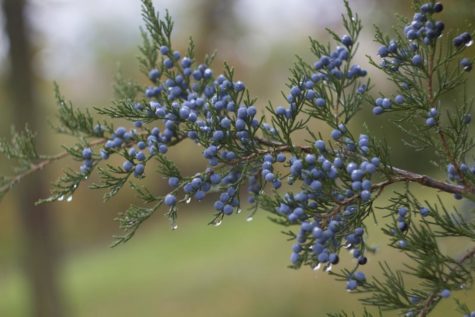
- Ruler: Sun
- Magickal form: Incense, fresh sprigs, berries, essential oil
- Basic Powers: Protection, Love, Healing, Cleansing
- Cautions: Do not drink the tea if you are pregnant, wish to become pregnant, or if you have kidney disease.
In the past, Juniper was regarded as a magick shrub to use against devils, evil spirits, and wild animals. It is mentioned in the Bible as a symbol of protection. Its aromatic scent made it a popular strewing herb, and shoots were burned to disinfect the air in a room.
Brew the berries into a tea and drink it to increase sexual stamina. Crush dried berries to release their scent and add to love potions to attract a man. String the matured berries for an attractive charm designed to attract lovers.
Juniper berries can be used in love spells, particularly to enhance male interest and potency. Steep in wine and drink a few sips daily to increase male virility. Steep in vinegar and add it to your bath to make yourself more attractive to men or apply it directly to the genitals (diluted with water) to increase male interest in them. Or add it to a bath you’re sharing. Juniper berries and their essential oils make for a nice “masculine” scent for men’s cosmetics (aftershave, beard oil, etc.). Use with due caution.
Hang a sprig of fresh Juniper in the home to drive away evil. A sprig of Juniper will protect the wearer from accidents. Sometimes used in anti-theft sachets, as it guards against thieves. Grow Juniper at your doorstep for protection. Gin (which is made from Juniper) can be sprinkled across a threshold to guard against theft.
Juniper is a thief catcher. If you bend a young Juniper branch down to the ground and hold it where you place it with two weights, one a big stone, the other the skull of a murderer, and say, “Juniper, I bend and squeeze you till the thief (name him) returns what he has taken to its place,” the culprit will feel an unaccountable impulse to return the property.’
Brush down the body with a bundle of sprigs to remove illness and place drops of oil in a bowl of water to promote healing in a sick room. Burn Juniper for purification and good health. One of the earliest incenses used by Witches was made from a combination of the leaves and the dried crushed berries.
Though burning Juniper wood gives off only minimal visible smoke, this smoke is highly aromatic, and in ancient times it was used for the ritual purification of temples. The smoke was said to aid clairvoyance, and continued to be burned for purification and to stimulate contact with the Otherworld at the autumn Samhain fire festival at the beginning of the Celtic year.
In central Europe Juniper smoke played a part in the spring-time cleansing and casting out of witchcraft. Juniper was also burned during outbreaks of the Plague, and in Scotland the disease could be dispelled by fumigating the house with Juniper smoke while its occupants were inside, after which the house was aired and the occupants revived with whisky!
Juniper was burned to goddesses and gods in ancient Sumer and Babylon, and was widely used in Egyptian incense formulas. It was sacred to Inanna and her later counterpart Ishtar. Many centuries later in Europe, branches of Juniper were smoldered and carried around fields and farms to release protective energies and guard livestock and crops.
It is a common ritual incense ingredient in Tibet and was much used by various Native American groups.
It is said that a Juniper shrub or tree is a particularly effective and magical hiding place. Perhaps Juniper can be added to hiding and invisibility charms as well.
Juniper essential oil is currently used in traditional aromatherapy to detoxify the body, as a parasite destroyer and antiseptic. This seems in keeping with the “magickal” use of purifying homes and fields mentioned above, for protective rituals are designed to ward off negativity as well as to purge such energies from a person or place.
Inhale Juniper essential oil while visualizing its energies guarding you from negativity and danger. Or, for an internal purification, smell Juniper and visualize.
You can also make Juniper a part of health-maintaining rituals. Regularly smell the scent while seeing yourself eating correctly, exercising, and thinking positively.
Notes:
Because it is a variety of Juniper, and the magickal uses are quite similar, Eastern Red Cedar can be used as a substitute, and vice versa. More about Red Cedar can be found here.
A Healing Ritual
There was a folk medicine custom in some parts of the South West of England of burning the wood and needles close to a sick person. This practice is closely allied to the above New Year customs and presumably recognizes that the vaporized oil released into the air had some beneficial purifying effect to dispel infection.
Like many plants, there was a definite ritual which had to be followed when pulling or collecting Juniper so that the power and essence of the plant was not lost. In the case of Juniper, it had to be pulled up by the roots, the branches made into four bundles and held between the five fingers while intoning the appropriate incantation. Unfortunately the version which has been passed down to us has been heavily Christianised:
“I will pull the bounteous yew,
Through the five bent ribs of Christ,
In the name of the Father, the Son and the Holy Ghost
Against drowning, danger and confusion.”
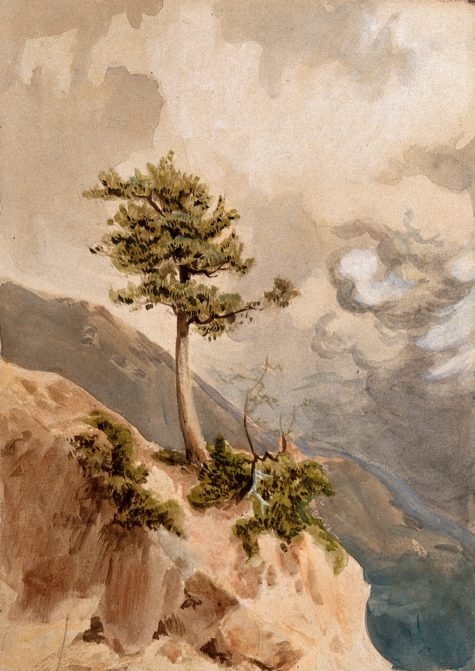
Juniper Mythology and Lore
Juniper was a symbol of the Canaanites’ fertility goddess Ashera or Astarte in Syria. In the Bible’s Old Testament, a Juniper with an angelic presence sheltered the prophet Elijah from Queen Jezebel’s pursuit. Similarly a later apocryphal biblical tale tells of how the infant Jesus and his parents were hidden from King Herod’s soldiers by a Juniper during their flight into Egypt.
Juniper plants are associated with protection in many different Native American tribes. The Interior Salish and Northwest Coast tribes used Juniper to banish evil spirits and protect themselves from witchcraft.
Among the southwestern Pueblos, junipers were believed to counteract ‘ghost sickness,’ a malady which afflicted bereaved relatives or people who handle the bodies of the dead.
Plains Indian tribes, such as the Dakota, Cheyenne, and Pawnee, often hung Juniper boughs on their tepees or burned them in the camp fire to keep their homes safe from storms.
And in many tribes people, especially hunters, would carry a spring of Juniper as a protective charm or rub Juniper branches on their bodies before embarking on a dangerous journey to protect themselves from grizzly bears, monsters, or general bad luck.
Juniper is one of the herbs frequently included in medicine bundles and amulets. Juniper berries were also eaten by people in some Southwestern and Southern California tribes, and Juniper leaves were frequently used as medicinal herbs.
Folk tradition records a divinatory significance to the appearance of Juniper in dreams, for:
- It is unlucky to dream of the tree itself, especially if the person is sick.
- To dream of gathering the berries, if it be in winter, denotes prosperity.
- To dream of the actual berries signifies that the dreamer will shortly arrive at great honors and become an important person.
- To the married it foretells the birth of a male child.
The largest body of folklore concerning Juniper comes from Iceland where it was traditionally believed that Juniper and rowan could not grow together because each creates so much heat that one or other of the trees would be burn up. For the same reason it was considered not a good idea to bring sprigs of both woods into the house together unless you particularly wanted your house to burn down.
Another Icelandic belief has it that if you are building a boat, you must either use both Juniper and rowan wood or use neither of them in the boat, otherwise it will sink.
In Wales it was said that anyone who cut down a Juniper tree would be dead within a year, while in Newfoundland it was believed that wolves and bears are repelled by Juniper wood and for this reason people who kept stock would ensure that Juniper wood was used in building enclosures or stockades in which livestock would be kept.
Also in Newfoundland it is believed that you will always find water under a Juniper tree, though this seems to contradict the natural history of Juniper which, as mentioned above, generally grows best on limestone or chalk soils which are usually well-drained.
The Story entitled Red Riding Hood in the book The Hero of Esthonia tells of a mother laying down Juniper branches and making the sign of the cross over them to protect her sleeping children from devils. In the story The Compassionate Shoemaker in the same book, the devil is defeated by being struck by a staff of Juniper.
In the Argonautica, Medea uses a freshly cut spray of Juniper to sprinkle her sleeping potion into the eyes of the serpent guarding the Golden Fleece.
- Meaning and history of the name Juniper:
From the Latin, juniperus which means “youth producing” or “evergreen.” During the Renaissance era, Junipers were used symbolically in art to represent chastity. Juniper has historically been used as both a boys and girls name, in fact Saint Juniper and Thornton Wilder’s character Brother Juniper are both male.

The Juniper Tree – A Story
“The Juniper Tree” is a German fairy tale collected by the Brothers Grimm. The text in the Grimm collection is in Low German and was originally written down by the painter Philipp Otto Runge. The complete story as originally written can be found over at Widdershins.
Here is a synopsis:
A wealthy and pious couple pray every day for God to grant them a child. One winter, under the Juniper tree in the courtyard, the wife peels an apple. She cuts her finger and drops of blood fall onto the snow. This leads her to wish for a child to be as white as snow and as red as blood. Six months later, the wife becomes gravely ill from eating Juniper berries and asks her husband to bury her beneath the Juniper tree if she dies.
A month later, she gives birth to a baby boy as white as snow and as red as blood. She dies of happiness. Keeping his promise, the husband buries her beneath the Juniper tree. He eventually marries again and he and his new wife have a daughter named Marlinchen (in some versions Marlene, Marjory or Ann Marie).
The new wife loves Marlinchen but despises her stepson. She abuses him every day, claiming that she wishes Marlinchen to inherit her father’s wealth instead of her stepson. One afternoon after school, the stepmother plans to lure her stepson into an empty room containing a chest of apples. Marlinchen sees the chest and asks for an apple, which the stepmother gracefully offers. However, when the boy enters the room and reaches down the chest for an apple, the stepmother slams the lid onto his neck, decapitating him.
The stepmother binds his head with the rest of his body with a bandage and props his body onto a chair outside, with an apple on his lap. Marlinchen, unaware of the situation, asks her stepbrother for an apple. Hearing no response, she is forced by her mother to box him in the ear, causing his head to roll onto the ground.
Marlinchen profusely cries throughout the day whilst the stepmother dismembers the stepson’s body and cooks him into a “blood-soup” for dinner. She later deceives her husband by telling him that his son stayed at the mother’s great uncle’s house. The husband unwittingly eats the “blood-soup” during dinner and proclaims it to be delicious. Marlinchen gathers the bones from the dinner and buries them beneath the Juniper tree with a handkerchief.
Suddenly, a mist emerges from the Juniper tree and a beautiful bird flies out. The bird visits the local townspeople and sings about its brutal murder at the hands of its stepmother. Captivated by its lullaby, a goldsmith, a shoemaker and a miller offer the bird a gold chain, a pair of red shoes and a millstone in return for the bird singing its song again. The bird returns home to give the gold chain to the husband while giving Marlinchen the red shoes.
Meanwhile, the stepmother complains about the “raging fires within her arteries”, revealed to be the real cause of her anger and hatred towards her stepson. She goes outside for relief but the bird drops the millstone onto her head, killing her instantly. Surrounded by smoke and flames, the son, revealed to be the bird, emerges and reunites with his family. They celebrate and head inside for lunch, and live happily ever after.
Sources:
- Encyclopedia of Herbology
- Plant Lore
- Trees For Life
- Witchipedia
- White Dragon
- Encyclopedia of Magickal Ingredients
- The Herb Stop Blog
- Magical Herbalism by Scott Cunningham
- Magical Aromatherapy by Scott Cunningham

- Latin Name: Thuja occidentalis
- Alternative names: Thuja, White Cedar
- Ruler: Sun, Venus
- Type: Evergreen Tree
- Magickal Form: Bark chips, Twigs and Branch tips, Essential Oil
One of the holiest of woods, cedar is considered feminine and receptive in nature. White Cedar (Arborvitae) denotes great beauty, majesty, and strength. It is highly protective when worn and draws money, good health, and well-being when burned. White Cedar (Arborvitae) wood and bark appear in spells where benevolent power is needed.
Add to love potions when strength is needed to overcome hardships. White Cedar (Arborvitae) opens up intuitive channels and brings forth compassion and humility. It is a true symbol of prosperity.
To move a person out without hurting him, cut three White Cedar branches, one three feet long and the others one foot long. Carry them to the person’s house and lay the long branch on the pathway, touching the front door and pointing to the street. Place the two short branches crosswise to this, at equal distances from each other to make a “double cross” shape. As you lay down the branches say: Now you will move by Faith (first branch). Hope (second branch). and Charity (third branch). Then walk away.
To rent a room put Arborvitae or White Cedar oil on the doorknob. People who come to see the room, will touch the doorknob and they will be more inclined to rent it.
To make the one you love follow you, wrap a fresh fig leaf tightly around a strip of White Cedar bark and wrap a leaf torn fro the Bible tightly around them both. Carry this on you, and your lover will follow you if you move.
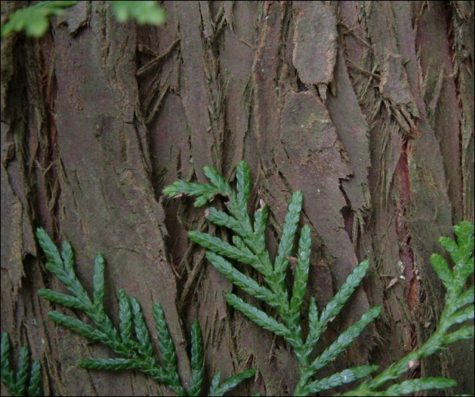
History and Lore
White Cedar (Arborvitae) is a tree with important uses in traditional Ojibwe culture. Honored with the name Nookomis Giizhik (“Grandmother Cedar”), the tree is the subject of sacred legends and is considered a gift to humanity for its myriad uses, among them crafts, construction, and medicine.
A nice native American story about the Cedar can be found here: The Story Of Cedar.
It is one of the four plants of the Ojibwe medicine wheel, associated with the north. White-cedar foliage is rich in Vitamin C and is believed to be the annedda which cured the scurvy of Jacques Cartier and his party in the winter of 1535–1536. There are some reports that the Ojibwa made a soup from the inner bark of the soft twigs.
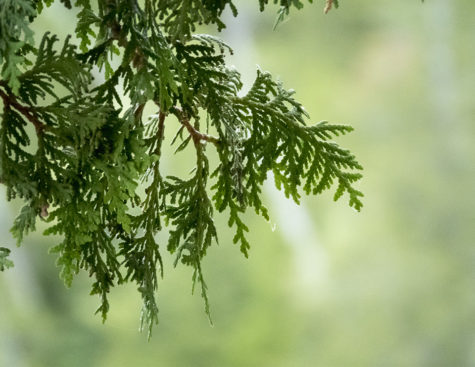
Arborvitae Aromatherapy
Turn Arborvitae oil into a household spray with this easy do-it-yourself. Add a few drops of Arborvitae essential oil into a spray bottle and add water. Use this spray on surfaces or on hands. Arborvitae oil is a powerful cleansing and purifying agent. By incorporating this spray into your home, you can protect yourself and your family against seasonal and environmental threats while keeping your house fresh and clean.
Arborvitae essential oil has the ability to inspire feelings of peace and calm. If you are looking for a great way to unwind after a long day, place a few drops of Arborvitae oil into a diffuser or rub a drop of Arborvitae oil onto your wrists to produce a sense of peace and calm. Additionally, using Arborvitae essential oil during yoga or Pilates can increase the effectivity of your experience by inducing feelings of soothing relaxation. Diffusing Arborvitae essential oil can also help purify the air and provide a grounding aroma.
Bring your furniture back to life with this DIY Wood Polish with essential oils. If you want to keep wood looking fresh and clean, it is important to invest in proper cleaning supplies and a good routine. One of the most effective ways to clean wood is by using a wood polish that is natural and free of any harmful chemicals. Many commercial wood polishes contain chemicals and artificial fragrances that can cause irritation or health problems when not applied with proper safety precautions. Follow the instructions to this homemade solution to create a natural wood polish that is free of harmful toxins.
Wood furniture should only be polished every couple of months, but make sure to maintain the look and quality of your wood furniture by frequently dusting it or wiping it with a damp microfiber cloth. This will help to keep dust and damaging substances away from the wood and will help keep the wood from looking aged.
Create your own musky outdoor cologne with Arborvitae essential oil. Arborvitae oil’s aroma is woody and warm and when combined with Cedarwood and Frankincense, provides an invigorating aroma, perfect for a fresh cologne scent. Using these oils together will create a great cologne for any occasion and will also produce a fragrance that uplifts and relaxes the senses.
Arborvitae essential oil blends well with Birch, Cedarwood, Cassia, Cinnamon Bark, and Eucalyptus essential oils for diffusion.
Sources:
- Encyclopedia of Herbology
- Encyclopedia of Magickal Ingredients
- Hoodoo Herb and Root Magick
- doTERRA
- Latin Name: Juniperus virginiana
- Planet: Sun
- Element: Fire
- Part Used: Dried wood, essential oil
- Magickal Influences: Spirituality, Self-control
- Warning: Cedarwood oil should not be used by pregnant women.
Cedar has an important place in many cultures as a strong spiritual agent with a cleansing presence, a protective plant in rituals and as medicine. It is commonly ascribed similar properties as Sage; the needles, bark, or sap is burnt as an incense, the smoke it emits protecting and cleansing against spiritual “residue.” Cedar can be “smudged” like sage, to purify a space, home, or person.
In the ancient world, cedar from Lebanon was highly prized – so much so that only a few trees remain standing in that country. The name Lebanon is derived from the Akkadian word lubbunu, incense.
This was one of the most widely used incenses in the general Mesopotamian region and by the pre-contact Native American tribes.
There are few among us who aren’t familiar with the rich scent of cedar. Shavings of the wood are sold in pet supply stores. The characteristic smell of pencils stems from the red cedarwood used to produce them. And many of us have at least smelled a cedarwood chest. These are ideal for storing magickal supplies (everything, that is, except herbs and essential oils).
The fragrant, calming smoke when the wood burns is believed to allay nightmares, night terrors, hauntings, malevolent influences/thought forms, evil spirits, and ill-meaning wild animals. Many native peoples in North America use the smoke to cleanse a home; in the Native-Hispanic traditions, home-cleansings are called “limpias,” and Cedar wood being favored in this way. Again, the smoke of Cedar is used to purify the body, not just the home.
Two main cedarwood essential oils are available. Because the essential oils share similar constituents, Atlas Cedarwood (Cedrus atlantica) or Red Cedarwood (Juniperus virginiana) can be used with equal effectiveness in magickal aromatherapy.
The scent of the wood and the essential oil promotes spirituality. Inhale this sweetly antiseptic, calming fragrance before religious rituals to deepen your connection with Deity.
It’s spiritual qualities make the fragrance of cedar ideal for bringing ourselves into balance. Smell the aroma and visualize yourself as poised, calm, and in control of your own life.
Many Cherokee descendants carry a small piece of cedar wood in their medicine bags worn around the neck for protection. In a legend of the cedar tree told by the Cherokee Indians, the trees literally hold spirits of their ancestors, and they believe the wood carries powerful protective spirits. It is told that the Creator placed the spirits of their people in a newly created tree which makes it a very special tree indeed.
In another old Indian legend, a young hunter has a vision of a redheaded woodpecker that teaches him how to make the flute from a red cedarwood tree; the young hunter uses his flute as a love charm to win his wife, who was the daughter of a big and powerful chief of the village.
It made its way into folklore; bringing good luck and good fortune, health and healing, cedar was burned to invite positive energy, happiness, harmony and peace. Cedar chips or shavings were burned to purify the vibrations of your sacred area and house, driving out all negative entities. Fresh cedar boughs are used as brooms for purification, exorcisms and to cleanse temples.

Superstitions and Lore
The Eastern Red Cedar is a slow growing tree and lives to be very old. It gets its name, grave yard tree, because of an old superstition that says, when a red cedar you planted grows tall enough to shade your grave, it will be time for you to die.
Never transplant a Cedar tree, it is bad luck. If you do transplant a Cedar tree and it dies, you will die soon thereafter.
In the Medieval Christian tradition, a cedar trees (along with elder trees) were thought to possibly have been used to make the cross that Jesus was crucified on, for this reason it was considered bad luck to burn cedar. It was also believed that Cedar brought poverty, so it was not a good idea to put one in your yard.
On the other hand, if a Cedar tree comes up on your land, don’t cut it down. As long as that tree flourishes, your family will have good health.
The Arabs referred to the older Cedars of Lebanon as “saints” and believed that he who injured one would be overtaken by evil.
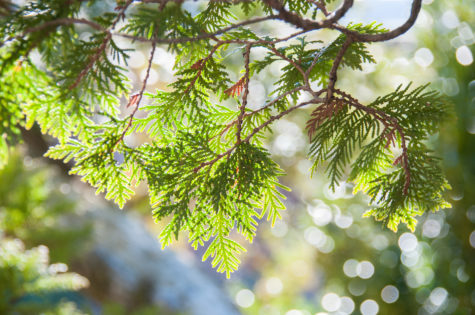
Some Thoughts About Red Cedar
From the Iowa Herbalist here are some interesting thoughts about the Eastern Red Cedar:
I always find it interesting and thought-provoking when the spiritual and emotional effects of plants reflect their physical ones. Just as Cedar seeks to purge our bodies of spiritual impurities, or to protect a home from negative influences, the hard reality is seen at work when Cedar is taken as medicine: whether it is expelling mucus from our lungs as a stimulating expectorant, clearing them of bacterial or viral infection; or opening up our pores in a cleansing fever to clear toxins, as invoked and adopted by sweat ceremonies. Whether you believe in esoteric herbalism, or not, Cedar does one thing: it cleans us, in mind and body.
Now, when I take that mind-transporting whiff of Cedar smoke, I realize why I felt that way. This beautiful tree’s magic is powerful. If you ever need a friend in the midst of illness, or during a hard emotional time, or if you just need to get some bugs out of your system– Cedar is your herb.
If you wish for simpler times, are feeling nostalgic or just want to reminisce, no plant can summon that feeling better; taking you far up into a cabin in the mountains, surrounded by pines and firs, and blankets. Enjoy it in a tea, your favorite elixir, a tasty syrup or perhaps in a calming incense blend. I remember such effects when I’m winding in between the rust-colored Eastern Red Cedars, peppered across Iowa’s tawny grasslands in winter, harvesting their little blue cones. Each time I bring in a jar or two, I spread some of the berries in places where Cedars don’t grow– to make sure there are more trees there for us to enjoy in the future. It’s my way of saying: “Thank you.”
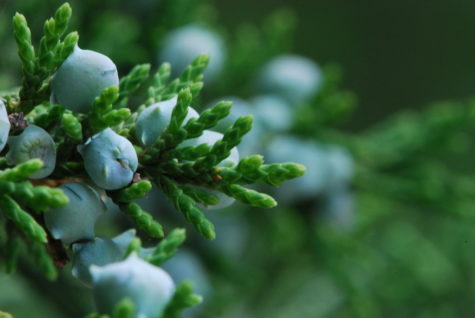
About Juniper
Because Red Cedar is a Juniper plant, the following also holds true.
Juniper, particularly through her wood and berries, is an absolutely wonderful tree with a wide range of uses. In terms of overall meanings in a North American context, we might summarize with the following:
Juniper is about warmth and fire. Juniper helps warm people up and is a strong fire-dominant tree, suggesting many associations with fire: passion, energy, warmth, and the sun.
Juniper offers hope in dark times. Juniper’s berries have long been a staple through the darkest of winters, and I see this both physically and metaphorically. Culturally, we are in a period of darkness, and trees like Juniper can help see us through.
Juniper offers regeneration and bringing things back. Juniper’s ability to grow in places few other trees can demonstrate that this tree is a true land healer, offering us hope in these dark times and sharing the critical message of the healing power of nature. I also think this is tied to its sympathetic magick uses in the American magickal traditions–Juniper helps bring things back.
Sources:
- Encyclopedia of Herbology
- Locusts and Honey
- Magical Aromatherapy by Scott Cunningham
- Iowa Herbalist
- Encyclopedia of Superstitions
- Druid’s Garden
Folk Names:
- Angel Food
- Archangel
- Garden Angelica
- Masterwort
- Root of the Holy Ghost
Magickal Uses:
Angelica (Angelica archangelica) is known in magickal herbalism as a powerful guardian and healer. It is said to banish negativity and attract positive energy. Angelica grows in tall, blossoming stalks—but typically only the root portion is used in spellwork. It is said to enhance female power, protect children, ward off evil, and improve health and family matters.
Angelica means angelic and in the places where it grows, it has been revered as a special plant. In Scandanavia, it was used as a shamanic medicine by the indigenous Sami people. In the U.S., various varieties of Angelica were used in rituals and ceremonies by Native American tribes. The Iroquois brewed Angelica root into a tea and sprinkled it about their homes to quiet “rattling” ghosts.
Angelica’s magickal virtues are linked to its robust stature, pleasant aroma, and association with the Archangel Michael. Legend has it that the angel appeared in a dream to a monk, showing him the herb that could cure the plague in Europe. Traditionally, Angelica blooms on the feast of the Apparition of the Archangel Michael, May 8.
Ruled by the Sun and associated with Venus, Angelica is most often used in spells for protection and exorcism. It can be grown in the garden as a protection. Carry the root with you as an amulet. Burn the dried leaves in exorcism rituals.
Burn the powdered root when you want to invoke angels. Because Angelica is a healing herb, you can mix it in bathwater to promote good health. it also removes hexes. Sprinkle around the house to ward off evil or dry dust your body to remove a curse. It is an ingredient in a Hoodoo working known as the Fiery Wall of Protection.
Angelica is also considered lucky, so rub the root between your palms when you gamble or pick your lottery numbers.
- Carry a piece of Angelica root to bring strength and ward off hexes.
- Put the root in a white mojo bag for protection, or a yellow one for courage.
- Add the dried root to incenses, floor washes, and baths to break jinxes and purify the home.
- Use Angelica to consecrate amulets of Archangel Michael and all Solar charms.
Angelica is associated with personal courage, when that courage is based in moral uprightness. Angelica is said to bring blessings of emotional temperance and harmonious home life.
Mexicans say that if a girl or young woman has been badly frightened, she should carry a whole Angelica root in a white bag. If she was frightened by a man, add a holy card of the Archangel Michael.
Folklore:
It is the date of the blooming that has been regarded as the source of the plant’s name. The day of Michael the Archangel used to be May 8, and Angelica blooms on that date, hence Angelica archangelica. There is more of Angelica in the folklore, such as the legend that an archangel revealed in a vision that Angelica would cure the plague. In time, Angelica came to be regarded as a simply angelic plant, and was known widely as “The Root of the Holy Ghost.”
The history of Angelica is rooted in prehistoric times and even the passage of centuries couldn’t shake the associations between Angelica and pagan beliefs from the Christian mind. It is altogether possible that the plant acquired its angelic stature in the folklore because of the pagan regard for the plant as an infallible guard against witches and evil spirits, and their spells and enchantments.
Peasants tied Angelica leaves around the necks of their children to protect them from harm, and even the name, when invoked, was supposed to be helpful in a jam.
It is alleged that it is the custom in the lake district of what was once Latvia for country peasants to take part in an annual procession, carrying Angelica stems to sell in the towns. Part of the procession is the chanting of a chorus with words so old that no one knows what they mean. This ritual was an early-summer custom and the words of the chorus have been passed from generation to generation.
Metaphysical Meanings
- Magnifies: Divine support, wisdom + deeper meaning
- Dissolves: Apathy, lack of connection, superficiality, surface level perspective
If you are attracted to Angelica, you may be interested in distilling a deeper meaning from everything in life. You may feel tired of things that feel flat or superficial, yearning for a deeper authentic connection to people and a truer intimacy in relationships.
Sometimes we feel safer staying on the surface level in our conversations and experiences. Other times we feel a sense of apathy, disengagement, or worry that there is no greater meaning to the occurrences in our lives. We may fight what happens to us, try to control it or feel hopeless vs. trusting in the wisdom of life.
Angelica magnifies our everyday experience of interconnectedness and deeper meaning woven throughout everything that happens in our lives. It enhances our awareness of benevolent unseen forces and angelic or protective support. It opens up a visceral sense of magic and synchronicity, and a feeling of being fortunate, lucky and grateful. Everything around us feels whimsical and rich with meaning.
We can relinquish control and allow ourselves to trust in the way life unfolds. We have a sense that we are connected to everything and that there is divine support in all our endeavors. We experience a knowingness that we are supported by divine or beneficial good forces and we can ask for assistance or have a relationship with them.
Sources:
This information was collected from a variety of sources all of which are listed in a much more in depth look at Angelica over at the Encyclopedia of Herbology
One of the strongest ingredients for male virility, the Horseradish root is in essence magickal Viagra. It is cultivated in the spring and difficult to find at any other time of the year.
- Women should lay the whole root on the belly and visualize either getting pregnant or being satisfied sexually.
- Men must hold the whole root to the genitals and visualize long-lasting erections.
- Perform these visualizations on a full moon.
Eat both white and red shredded horseradish at any time of the year for protection.
To reverse any malevolent magick against a building’s inhabitants, grate or grind dried horseradish root. Sprinkle it over your thresholds, corners, windows, and any areas perceived as vulnerable.
Source: Encyclopedia of Herbology
Also known as Creeping Charlie, Ground ivy has a strong connection with the powers of magick and divination. Folk names include:
- Alehoof
- Catsfoot
- Field balm
- Gill-by-the-ground
- Gill-over-the-ground
- Hay-maidens
- Hedge-maids
- Jenny-run-by-the-ground
- Lizzy-run-up-the-hedge
- Run-away-robin
- Tunhoof
Ground Ivy is bound to Saturn and water. It is used in magick mostly for divination purposes either by burning dried leaves, by using the oil to anoint a divinatory tool, such as a deck of Tarot cards or by drinking fresh or dried leaves in a tea.
Sachets, charms and teas made of fresh or dried ground ivy can be worn for help in rebuilding when you have given too much, as protection from theft, and for fidelity, honesty, and weddings or new love.
Considered a safeguard against sorcery it was worn by milkmaids when first milking cows in the pastures. A magic charm, it was used to prevent the cows from enchantment. In many regions the first milking of the cows was actually done through a wreath of ground ivy.
Other magical uses of ground ivy included promoting sleep, meditation, healing, love, friendship and fidelity. The ritual use of ground ivy was popular and the herb was often woven into crowns and garlands to be worn on Midsummer’s Eve.
Ground Ivy is very powerful in protection against evil magick and psychic attacks. Using this herb will help you in identifying other witches and will help you reveal who is using negative magick against you.
“To find out who might be using negative magic against you, place some ground ivy around the base of a yellow candle. Burn the candle on a Tuesday and the person will then become known to you.”
~Scott Cunningham
A tea of Gill-over-the-Ground may be sipped to help overcome shyness. Strewing leaves of this herb about the floors of your home is said to promote serenity and peaceful dreams.
If you celebrate Beltane, weave some stems and flowers into your crown. Pick an alias name for it that appeals to you—my personal favorite is Gill-over-the Ground. Repeat it several times until it rolls nicely off your tongue and sounds almost exotic. And, if you must pluck some of it, at least stop and pay homage to the myriad of uses of it throughout time. Ground ivy, a small herb with great determination!
Sources:
- Scientific Name: Helianthus annuus
- Type: Plant
- Quality: Hot
- Planet : Sun
- Element: Fire
- Parts Used: Seed, Flowers, Whole Plant
- Basic Powers: Protection, Fertility
When summer is at its peak, its not uncommon to see rows of sunflowers blooming in all of their colorful glory. Ranging from just a foot or two high to well over eight feet in height, sunflowers come in a variety of yellows and oranges. Sunflowers have been growing in North America for ages, so there is a significant amount of folklore surrounding them.
No flower can lift someone’s spirits quite like sunflowers. They are bright and cheery, and as warm and inviting as the sweet summer sun. With brilliant yellow petals, also known as “rays,” sunflowers have an unmistakable sun-like appearance.
As its name signifies, the sunflower has close solar associations, not only because of its appearance, but also because of its habit of turning its head to follow the course of the Sun during its journey across the sky.
Spirits of the dead are drawn to this flower, for it reminds them of the sunlit world they once lived within.
The sunflower has magickal powers, too, and adorned the crowns of Roman emperors, thereby conferring the ruler with the potent power of the Sun that the flower held within it. The sunflower was later adopted by the Christian Church to denote the saints, prophets, and apostles of the faith; as the flower follows the Sun, so the true believer follows God.
Sunflower Lore
The sunflower originated in South and Central America, and migrated north, most likely due to the migration of Spanish conquistadors. Remains of sunflowers dating back 4,600 years have been found in Mexico. In the 1500s, Spanish explorers took sunflowers back to Europe with them, and the species has spread around the world since then.
In the 16th century, Inca priestesses in Peru worshiped a giant variety of the sunflower plant. This plant was a symbol of the Inca sun god.
The Inca priestesses wore clothing that was adorned with large flower shaped ornaments. These ornaments and decorations were made from gold, and the image of the sunflower was often carved into golden breastplates.
The sunflower was sacred to Native Americans; the flowers were used extensively in celebrations and festivities.
Native Americans used this plant for food and other things. It is believed that it was a very important Native American crop. Like the Inca priestesses that came before them, Native Americans also worshiped the plant.
They held spiritual ceremonies such as the Sun Dance. As well as being a food source, the flower became a symbol of strength and endurance. They would put sunflower seeds on top of graves containing their dead.
Early colonists in North America learned about the many uses of sunflowers from the tribes near them. In addition to being useful as a source of yellow and orange dye for fabric, the sunflower also comes in handy medicinally – it was known for its antimalarial properties.
Sunflowers In Legend
The Greek legend had it that a nymph called Clytie and the Sun God, Helios, were in love. But Helios cast aside poor Clytie for another lover. Clytie died of grief and was transformed into the sunflower, destined to live alone and having to follow the course of her former love. Therefore the sunflower, as a symbol has adopted an aspect of Clytie’s personality: the inability to overcome the emotions or to “let go.”
- An alternative story is as follows:
There was a maiden who fell in love with Apollo. Every time he passed overhead in his fiery sun chariot, she stood in her garden and gazed at him longingly, even though she had chores and tasks to attend to. Apollo, who made a point of shining brightly so people on earth couldn’t actually see him, eventually got fed up with the girl’s foolishness. He flung one of his sun arrows at her, and she turned into a sunflower on the spot.
To this day, she faces east in the morning and west in the evenings, following the path of Apollo. In some versions of the story, it was not Apollo but the other gods who took pity upon her and turned her into a sunflower.
Sunflower Symbolism
The sunflower is a symbol of light, hope, and innocence, and has been adopted fairly recently as a symbol for world peace.
Sunflowers are known for being “happy” flowers, making them the perfect gift to bring joy to someone’s (or your) day.
In many folkloric traditions, sunflowers are seen as symbols of good luck. Sunflowers are often associated with truth, loyalty, and honesty.
The seed head of the sunflower contains a magical symbol. It shows a perfect example of the golden spiral that has been created naturally. This shape is one of the cornerstones of sacred geometry.
The Victorian language of flowers gave it various connotations, so that in certain contexts it stood for lofty ideas, or less flatteringly as a symbol for false riches.
In China, this flower symbolizes longevity or long life. It may be due to the sun which is perceived to have an enduring life even though eventually it will die out.
On a practical note, when these plant stems are cut to make flowers for vases and bouquets, they can last for 2-3 weeks so are quite hardy.
In dreams, the sunflower is believed to be a very lucky symbol or motif. It is viewed as symbolizing career and employment ambitions, wealth, good fortune and positive opportunities.
This flower is quite the lucky charm for someone who may be beginning on a new career path or starting a job.
One of the sunflower’s greatest and most important symbolic meanings is that of having a nuclear-free world. This flower was chosen back in 1996 in order to represent a world of peace and one that is free of any harmful nuclear weapons.
New varieties and seeds were planted during this time on an old Ukrainian missile base and also planted across nuclear disaster sites such as Fukushima, Chernobyl and Hiroshima.
The flowers have been shown to absorb harmful toxic elements and radiation from the soil and clean up the environment. Being so good for the environment as well as beautiful to look at, it is no wonder that the sunflower has now truly become a symbol of peace and also hope for the future of humankind.
Magickal Uses:
Faery flower sorcery sees the sunflower as harnessing the energy of the sun itself, making it useful for positive magick and lightwork. The light contained in its yellow petals radiates strength, useful for dispelling depression and encouraging a healthy sense of pride.
The flowers growing in the garden bring the blessings of the Sun. The seeds are often eaten by women who wish to conceive. This is done during the waxing Moon.
Always include a sunflower or sunflower seeds in a birthday spell to increase happiness, health, and years. Sprinkle the seeds on the earth to invoke prosperity. Place the flowers on a love altar to invoke a long-lasting relationship.
Sunflowers are symbols of good luck. Planting them around your home and garden will bring fortune your way. It is also said that if you pick a sunflower at sunset, then wear it on your person, it will bring you good luck the following day.
Sunflower seeds that dry and remain on the flower head are said to possess the magickal capacity to grant wishes. Hold an individual seed in your left hand and make your wish. Eat the seed or plant it in Earth.
Sunflowers are also associated with truth, loyalty, and honesty. If you want to know the truth about something, sleep with a sunflower under your pillow – and the next day, before the sun goes down, the truth should be revealed to you.
To reveal a thief, place three sunflowers under your pillow. The thief will be revealed in your dreams.
The sunflower is considered a flower of loyalty because day after day, it follows the sun, from east to west. In some folk magic traditions, it is believed that slipping a bit of sunflower oil or seeds into someone’s food or drink will cause them to be loyal to you.
The sunflower is often associated with fertility, thanks to its connection to the sun. To bring about conception, eat sunflower seeds or take a ritual bath with sunflower petals. A necklace or crown of dried sunflower heads can be worn–particularly at Litha, the summer solstice–to bring about fertility.
In 17th Century Europe, some rural practitioners of folk magic used an ointment that would help them see the Faerie folk. This used a blend of several summer, sun-oriented flowers, mixed in with sunflower oil and left in the sun for three days until it thickened.
Some people believed that sunflower seeds were preventatives against the spread of smallpox. Weave and knot dried sunflowers into necklaces and wear them to magickally repel smallpox.
In some forms of Hoodoo, the sunflower is associated with great joy. The oil is often used as a base in magical oils for ritual purposes. You can blend your own magical sunflower oil by blending freshly harvested petals into a carrier or base of sunflower seed oil, which is available in most grocery stores.
Please note that this is not the traditional hoodoo sunflower oil recipe, but it is still one that is effective. Once you’ve mixed your oil, consecrate it according to the method of your own magical tradition before using it in spellwork or ritual. A simple way to do this, with sunflower oil, is to leave it in the sun to absorb solar energy prior to use.
Brew a tea of sunflower petals in water, and use it to asperge around a sacred space during Litha rituals or solar-related spellwork. If you’re grieving or feeling down, use sunflower petals in a ritual bath for a magical, sunny pick-me-up.
The Spiritual Meaning of the Sunflower
The sunflower appears to worship the sun because the blooms have been thought to face the sun as it slowly moves and travels across the sky each day.
Many people view this flower as being highly spiritual. These flowers appear as if they follow the sun as it moves each day from East to West in the sky. It makes the flowers look as if they are highly loyal and devout, just as a follower of faith is.
In a spiritual meaning, these plants are seen as being genuine followers of the sun. This has a connection with Christians following God and other religions following their spiritual guide or divine being.
No matter how small or how little light there is, sunflowers are believed to seek out the light and hold their heads high as if in worship and adoration of the sun.
They are therefore a symbol of true and faithful loyalty to something that is much brighter and bigger than themselves.
Sources:
- Magical Herbalism
- Learn Religions
- Encyclopedia of Magickal Ingredients
- Feri Tradition
- Element Encyclopedia of Secret Signs and Symbols
- Pro Flowers
- ALEXANDRITE is a rare and expensive gemstone, when worn it draws luck and good fortune.
- AMBER is the fossilized resin of ancient coniferous trees.It has been used for nearly every purpose in magic. Warm to the touch, it is thought to possess life. Lucky and protective.
- APACHE TEAR, a globule of translucent obsidian, is carried as a good-luck charm.
- AVENTURINE is an all-around luck stone.
- CHALCEDONY, an arrowhead carved of chalcedony is worn or carried for luck.
- CHRYSOPRASE is a lucky stone worn for eloquence, success in new undertakings, and to attract friends.
- COPPER is a lucky metal, perhaps because of its past solar attributions, and so can be used in combination with any luck-bringing gemstones.
- CROSS STONE, a form of andalusite is found in coarse crystals. When broken open or sliced, they display a symmetrical cross pattern of alternating dark and light colors. As with all stones exhibiting unusual shapes or patterns, it is carried for luck.
- L-SHAPED stones are thought to bring good fortune, perhaps because this form suggest the conjunction of the spiritual with the physical. They can be carried as good luck pieces or placed on the altar.
- LEPIDOLITE is a purplish type of mica rich in lithium. It is a beautiful yet fragile mineral, carried to attract good luck to it’s bearer.
- LODESTONE is carried in pairs — one to protect and the other to bring good luck.
- OPAL, due to its flashing colors and beautiful unique appearance, the opal is a luck-bringing stone. The modern idea that the opal is a stone of misfortune, sorrow, and bad luck is untrue and can be traced back to a reference in the novel, Anne of Gierstein by Sir Walter Scott.
- ORANGE stones have some of the fire of red but are gentler in their effects. Protective, they have often been seen as symbols of the Sun and are thought to be luck attracting.
- SARDONYX was at one time engraved with an eagle’s head, set in silver, platinum, or gold, and worn to bring good luck.
- TIN is carried as a good-luck piece and can be shaped into talismans to attract money.
- TURQUOISE like all blue stones, is lucky and is carried to attract good fortune.
From: Cunningham’s Encyclopedia of Crystal, Gem and Metal Magic
